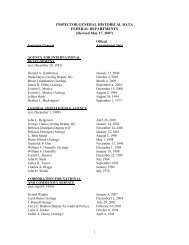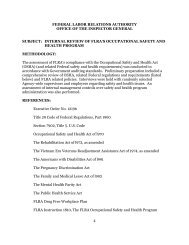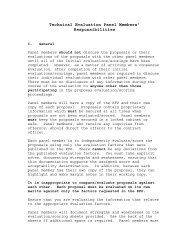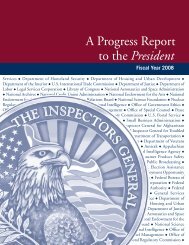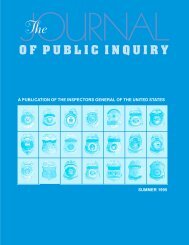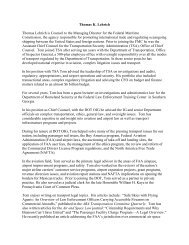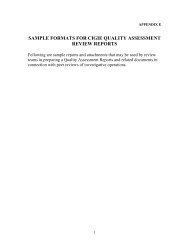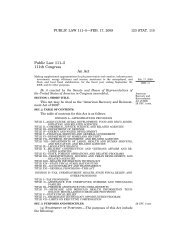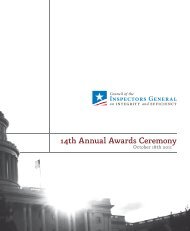GAO-12-208G, Designing Evaluations: 2012 Revision
GAO-12-208G, Designing Evaluations: 2012 Revision
GAO-12-208G, Designing Evaluations: 2012 Revision
You also want an ePaper? Increase the reach of your titles
YUMPU automatically turns print PDFs into web optimized ePapers that Google loves.
Chapter 4: Designs for Assessing Program<br />
Implementation and Effectiveness<br />
Table 2: Common Designs for Implementation (or Process) <strong>Evaluations</strong><br />
Evaluation question Design<br />
Is the program being implemented as intended? Compare program activities to statute and regulations, program<br />
logic model, professional standards, or stakeholder expectations<br />
Have any feasibility or management problems emerged? • Compare program performance to quality, cost or efficiency<br />
expectations<br />
• Assess variation in quality or performance across settings,<br />
providers, or subgroups of recipients<br />
Why is the program not (or no longer) achieving expected<br />
outcomes?<br />
Assessing Quality or the<br />
Progress of Program<br />
Implementation<br />
Source <strong>GAO</strong>.<br />
• Analyze program and external factors correlated with<br />
variation in program outcomes<br />
• Interview key informants about possible explanations<br />
• Conduct indepth analysis of critical cases<br />
Assessments of program implementation often compare program<br />
performance—or what is—to a criterion established in advance—or what<br />
should be. The evaluative criteria may be derived from the law,<br />
regulations, a program logic model, administrative or professional<br />
standards, research identifying the best practices of leading<br />
organizations, or stakeholder expectations. Some criteria identify an<br />
acceptable level of performance or performance standard by, for<br />
example, defining authorized activities. In some areas, a program may<br />
not be considered credible unless it meets well-established professional<br />
standards. When criteria have no predetermined standard of acceptable<br />
performance, the evaluator’s task is to measure the extent to which a<br />
program meets its objectives. Measures of program performance may be<br />
obtained from program records or may be specially collected for the<br />
evaluation through interviews, observations, or systems testing. For<br />
example,<br />
• To assess the quality, objectivity, utility, and integrity of an agency’s<br />
statistical program, an evaluator can compare its policies and<br />
procedures for designing, collecting, processing, analyzing and<br />
disseminating data with government guidelines for conducting<br />
statistical surveys (OMB 2006).<br />
• To evaluate the operational quality and efficiency of a program<br />
providing financial assistance to individuals, an evaluator might<br />
analyze administrative records that document the applications<br />
received for program benefits and the actions taken on them.<br />
Efficiency might be assessed by how promptly applications for<br />
benefits were processed for a given level of staffing; quality might be<br />
Page 32 <strong>GAO</strong>-<strong>12</strong>-<strong>208G</strong>



